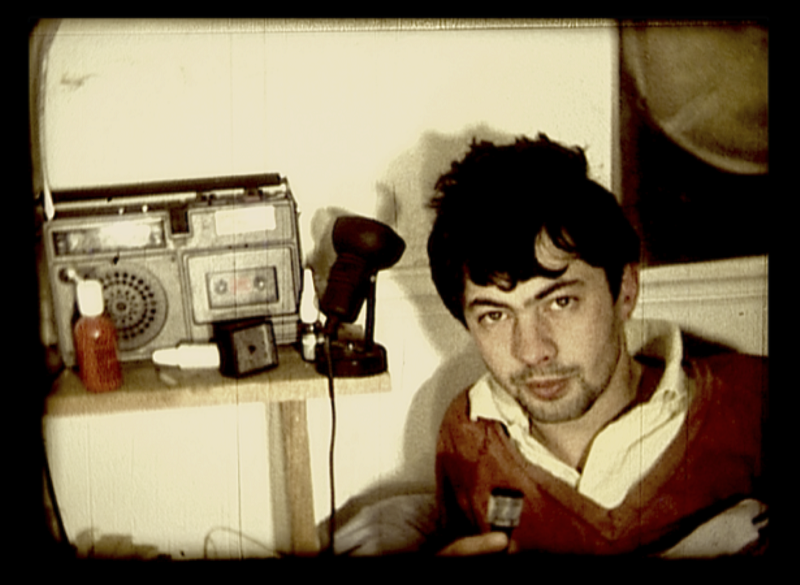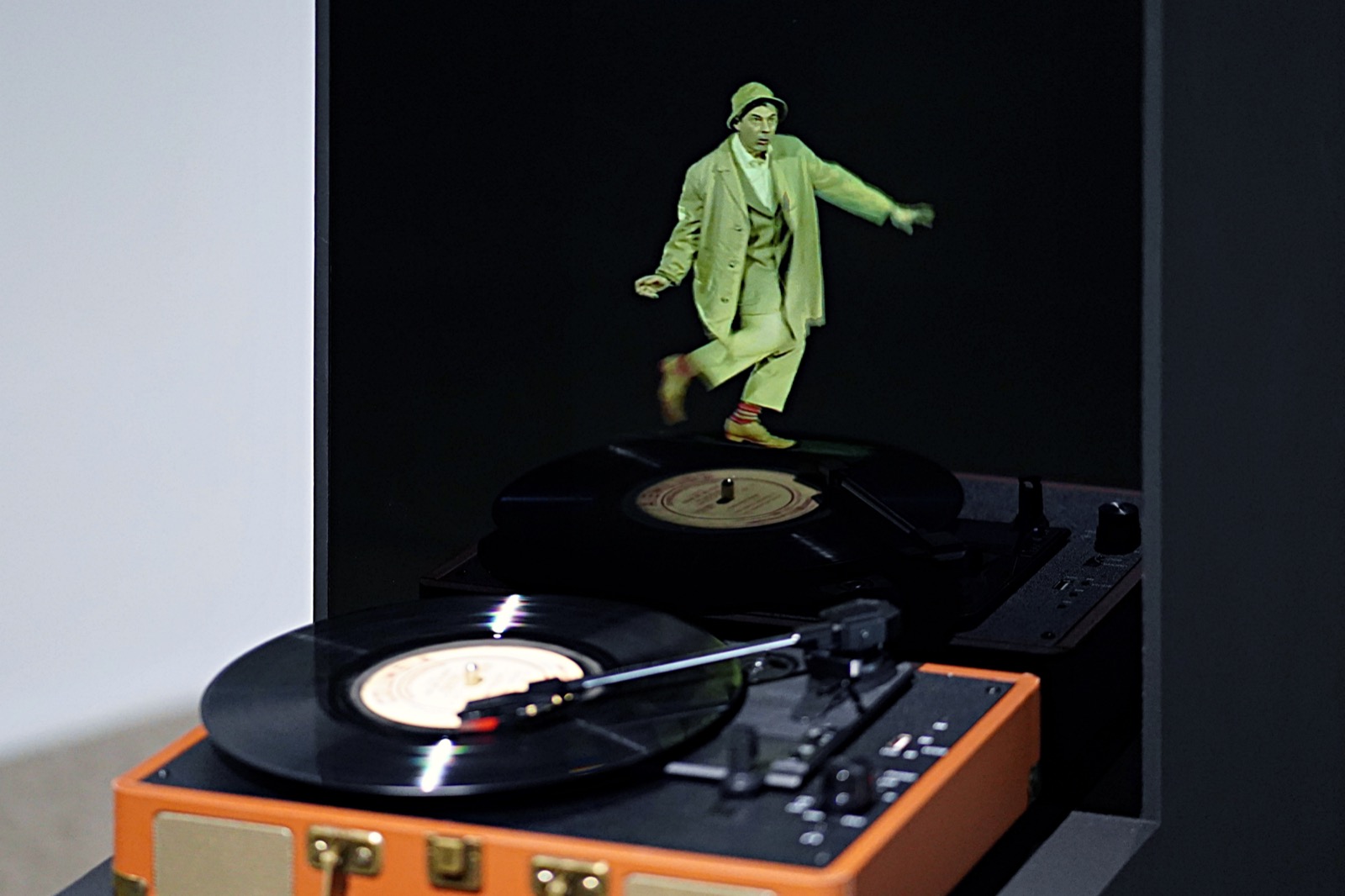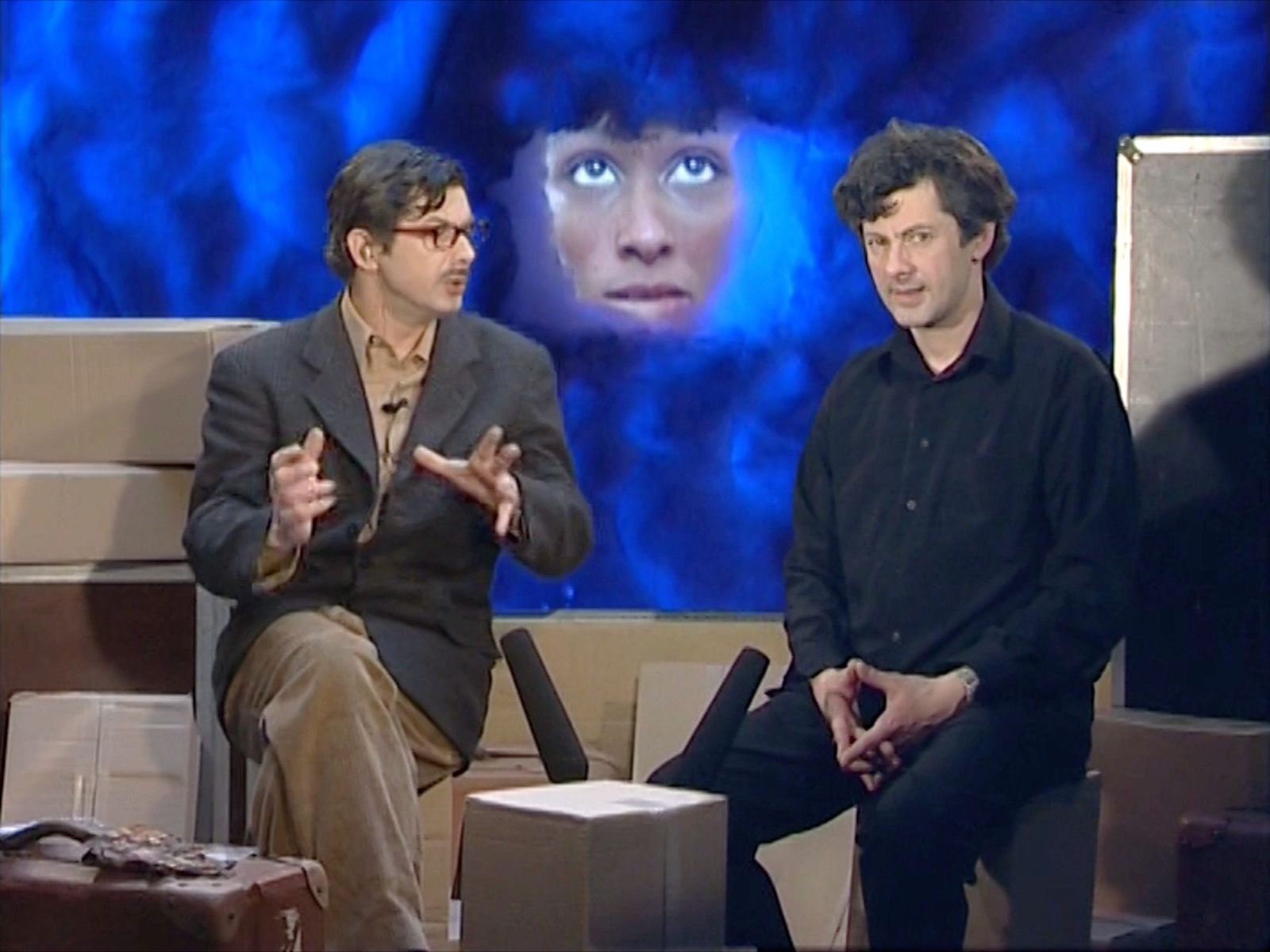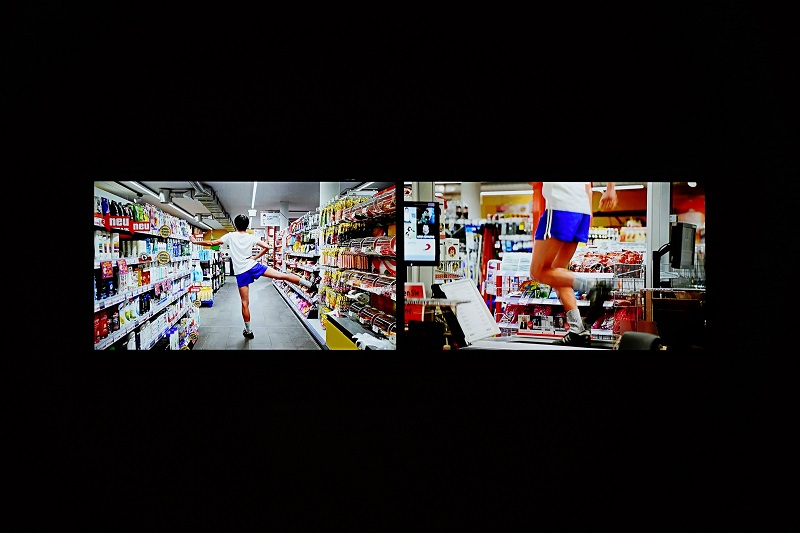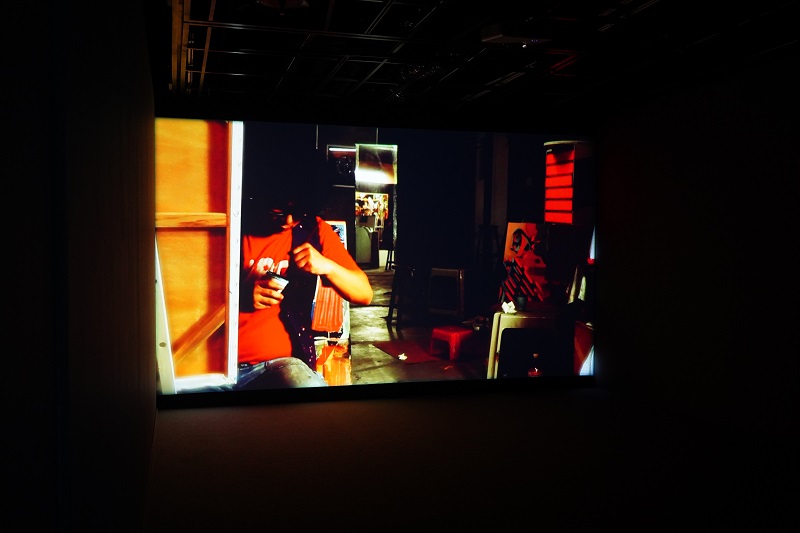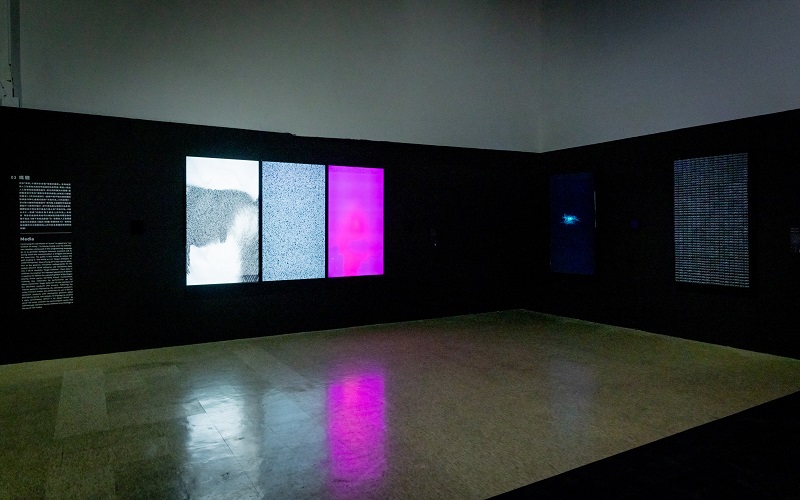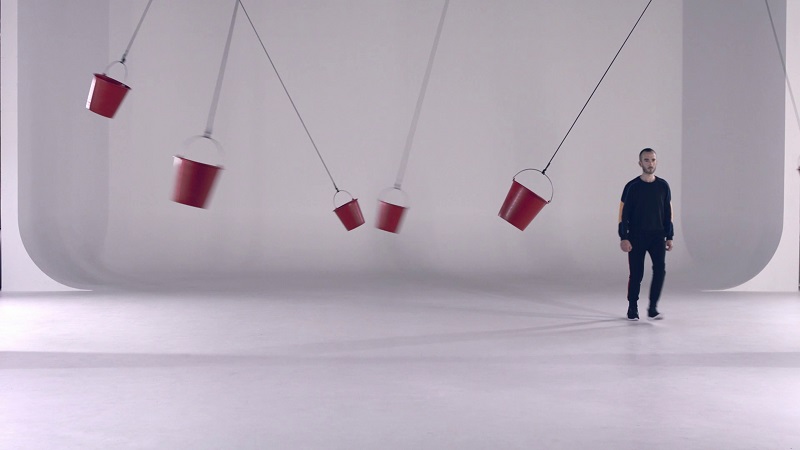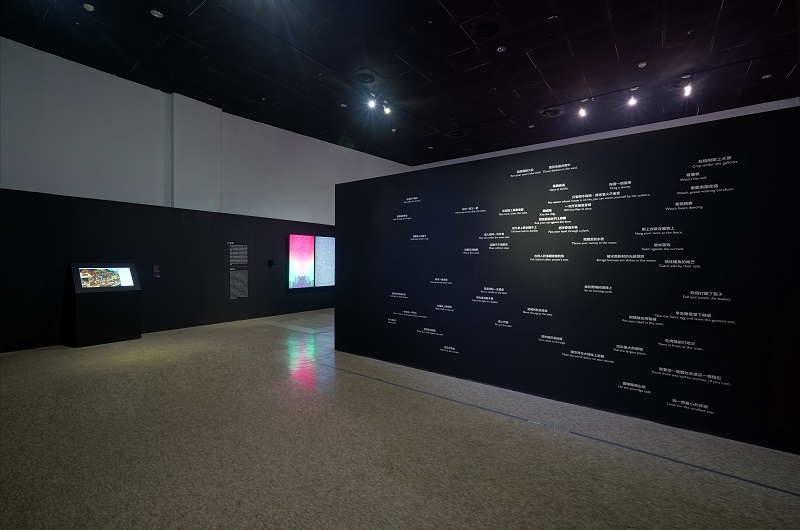If Monsieur Hulot was an Exhibition: The Aesthetics and Resistance in the Exhibition, “Simulcra of Real Lif
Text | Xiaoxiao YAN
https://artouch.com/art-views/art-exhibition/content-109392.html
Anyone who has seen the films of Jacques Tati will not easily forget Monsieur Hulot, the character played by Tati himself. Monsieur Hulot, a tall figure with almost no dialogue, embodies a certain "out-of-sync" character in society. He walks with a rhythm that is both light and clumsy, often pausing as if about to stumble or avoiding something. If Monsieur Hulot were to transform into an exhibition, what kind of exhibition would it be?
|
Pierrick Sorin, Awakening, video, color, sound, 5', 1988. |
For her recent curation of the "Simulacra of Real Life" exhibition at Hsinchu 241 Gallery, curator Chun-Yi Chang arranged a very approachable opening. The first artwork that greets the audience upon entering the exhibition space is the early video work "Morning" (1998) by French artist Pierrick Sorin. In this piece, Sorin films himself muttering to himself every morning, engaging in self-blame and reflection, and making promises to go to bed early each night. Meanwhile, echoing in the audience's ears is a familiar and cheerful whistling sound—the mere sound of which magically summons the subconscious image of Monsieur Hulot. This comes from another installation titled "Homage to Jacques Tati" (2008), where Sorin, with an almost lifelike appearance, imitates Monsieur Hulot's gestures. Through the "optical theater," a combination of image and physical installation, the character seems to "walk in place" on a rotating turntable.
Pierrick Sorin, Homage to Jacques Tati, video installation, 111x45x60cm, 2008. |
The entire exhibition begins with these two works by Sorin, each abstracting the two states of facing modern social life using different methods. On one hand, there is the perpetual desire to be the master of life but constantly struggling to achieve satisfactory results, even falling into a loop. On the other hand, Monsieur Hulot and his posture become a classic representation of an "outsider" in modern life. The contrast between him and social life partly stems from his innocence, reflecting the desires and awkwardness of individuals in modern society. The former is commonplace, perhaps part of our daily lives, while the latter has almost faded away, especially in an increasingly orderly society.
Regarding 'Life
Chun-Yi CHANG, when initially invited to organize an exhibition in Hsinchu, Taiwan, did not have a clear curatorial theme. During her first site visit, she found herself momentarily lost within the vicinity of the largest shopping center in Hsinchu, a typical product of modern consumer society that represents a certain "order of a good life." This brought to mind the American tourists in Jacques Tati's film "Playtime," who, upon arriving in Paris, find themselves confined in a replicated modern urban space. The iconic Eiffel Tower is only visible as a reflection on the glass doors. Thus, what we see, where we exist, what we imagine, and even what we yearn for may not necessarily be the "real" life. This self-reflective inquiry forms the core of the artworks gathered for this exhibition.
|
Pierrick Sorin, 261 Bd Raspail, Paris XIV, 2001, video, color, sound, 26'. |
During her time in France,Chun-Yi CHANG studied under François Jullien. This contemporary French philosopher, who has been invited to Taiwan three times, delivered a series of lectures at National Cheng Kung University in 2019 on the theme of "On Real Life," which was later published as a book in the following year. While Jullien has a clear discourse on "real life," he does not provide a direct and definitive definition. Instead, he engages in speculation about the "non-life" that opposes it, sharply pointing out that our constant efforts in modern society often lead us to live various lives that are "alienated and objectified." His deliberations also lead to a challenging practice: How can we resist these false and ubiquitous pseudo-lives, or the "mediocre lives" content with a superficial existence within pseudo-living?
The exhibition "Simulated Life" can be seen, to some extent, as Chun-Yi CHANG's curatorial response to Jullien's philosophical speculation on "life," using Monsieur Hulot's rhetorical style. Among the four works exhibited by Sorin, in addition to the previously mentioned "Optical Theater" version of Monsieur Hulot, "Lamentation in the Shower" (2019) directly interfaces with different realities in a distinct form. Particularly striking is the video work "261 Rue de la Convention, Paris 14th" (2001), presented in the form of a pseudo-TV documentary. In this, Sorin, directing and performing multiple roles himself, portrays a set of life fragments that alternately amuse and discomfort those within the art circle. Even in Taiwan in 2023, Sorin's satirical depiction of the European art industry's ecology from 20 years ago remains familiar. This inevitably brings to mind the almost identical modern architecture featured on travel posters for various cities, reminiscent of scenes from "Playtime." The "false" life permeates every aspect, establishing itself as a virus-like ubiquitous presence.
Daily Dilemmas
"Simulated Life" exhibition is succinctly divided into three sub-themes: "Behavior," "Scenery," and "Media," following a flow that mirrors Monsieur Hulot's hesitant steps in Jacques Tati's films or the entrapment within Sorin's "Optical Theater" installation. This sequence echoes a state of being surrounded by the "false" life, trapped in an unaware cycle. In response to this predicament, Zhang Junyi deliberately chose an order of contemplation that sparks dialogues between each successive artwork, rather than opting for thematic or conceptual similarities.
|
Musquiqui CHIHYING, The Jog, dual-channel video, 1-minute loop, 2014. |
|
Dorian Gaudin, Saâdane & Sarah, video, color, sound, 4'24", 2012. |
For instance, following Sorin's entertaining and thought-provoking performative video works, Cho Kuang-Yu's action videos "Shortcut to Systematic Life" series (2002, 2005), Zhi Ying's "Jogging" (2014) and "Dream" (2014) disrupt the habitual use of urban spaces through individual actions. Similarly, they use self-action to reveal the absurdity beneath the surface of daily life. Dorian Gaudin's video work "Saâdane & Sarah" (2012) follows a couple navigating a mundane life, where the high-angle shot of the room forces them to maintain balance and handle falling objects. Over time, the audience realizes that the camera's angle somewhat obscures the characters' true situation, creating a seemingly "normal" scene that conceals a "daily" crisis.
Transitioning from "Behavior," the exhibition enters a realm of constant interaction between individuals and their environments in the section titled "Scenery." The next artwork, "Love Actually" (2022), uses facial recognition devices at the exhibition site to remotely control a mechanical installation in the New York studio of the artist. Following this, Chen Wan-Jen's three works, "Mr. Bill's Morning" (2007), "Go to Your Future" (2011), and "Little Black Cat" (2012), use a looped sequence of images to connect the various dilemmas of contemporary individuals in the digital society. This, in turn, links to Eric Watier's text installation "Discreet Works [Thanks to Bruegel]" (2019-2020) and an online collaboration with Zhang Junyi. Does the leap between media and time and space help us understand our own situation?
|
Wan-Ren CHEN , Little Black Cat, video, color, silent, 2' loop, 2012. |
|
Yu-Hsiung HUANG, Vague Dialogue, video installation, LCD screen, computer program, 147x320x15cm, 2023." |
Digital Prosthetics and the Multifaceted Prism of Media
The entire exhibition weaves a coexisting and gradually evolving narrative among the three sub-themes. In the final section, "Media," the most prominent focus is on how contemporary and increasingly ubiquitous technological products such as digital devices, data sensors, and generative AI language models interact profoundly with human bodies and lives, even forming normalized "digital technology prosthetics."

Julien Prévieux, What Shall We Do Next? #2, 2014, video, color, sound, 16'47". |
|
Julien Prévieux, Where Is My (Deep) Mind?, 2019, video, color, sound, 14' 59." |
Two works by Huang Yu-Hsiung, "Failed Perception" (2021) and "Blurred Dialogue" (2023), examine the tension between the world translated or generated digitally and the "real" world. These works, including the use of artificial intelligence in artistic creation, become mediums for contemplating the true circumstances of human existence. Shih Shun-Chung, through "Waiting for Action" (2021), "Tech Zen" (2022), and the art collective "Fuzhong Boys" comprised of him and Zhang Zuo-Ju with "Karesansui" (2022-2023), more directly incorporate the real physical experiences of individuals, visualizing the existence of "digital prosthetics" intuitively. Closely related to these is the final two pieces of the exhibition by Julien Prévieux: "What Shall We Do Next? #2" (2014) and "Where Is My (Deep) Wisdom?" (2019). Noteworthy is that these two choreographed video works abstractly present contemporary gestures when using smart electronic devices and the imitation mechanism of human behavior by artificial intelligence machines under deep learning, removing the background for a highly abstracted performance. Considering that the latter work was created in 2019, at a time when Google had not yet unveiled the first generation of AI-driven conversation language models (LaMDA), it can be seen as a kind of prophetic sensitivity on the part of the artist.
At the intersection of François Jullien and Monsieur Hulot
So far, it can be seen that the curator subtly and abstractly connects different works with a thought-provoking approach. The exhibition adopts a graceful and rhythmic posture, echoing to some extent Julien's concept of "interval." Julien's concept has different connotations: firstly, in the face of different cultures, as opposed to dealing with them in a "differential" way, he suggests thinking in terms of "interval." He believes that "within the interval, the separated parties maintain tension with each other," leading to "continuous self-discovery" and "self-exploration and reflection through each other" (Note 2). Secondly, it continuously creates a distance from a certain "closed" and "self-consolidating" life or emerges as another life from within, where the "interval" is something that is "gradually opened, discovered as it progresses, cannot be planned, and may not be chosen when starting." He even directly points out that "one interval is enough to initiate another future," thus possessing powerful "generative power."
|
"The Simulacra of Real Life" exhibition venue. Scenes from the 'Simulated Life' exhibition. Left: Éric Wattier × Chun-Yi CHANG, Discreet Works - Homage to Bruegel (Online Work)'; Middle: Huang Yuxiong, Blurred Dialogue; Right: Éric Vattier, 'Discreet Works - Homage to Bruegel.'" |
For this exhibition, similar "interval" characteristics are expressed on different levels. Fundamentally, it is manifested through creative treatments such as parodying life fragments from different cultural backgrounds by artists. What artists create are simulacra that are closely related to daily life but make viewers feel familiar, insightful, yet fundamentally different. Their works do not directly distinguish between what is a false life and what is a real life. This includes the exhibition theme "Simulated Life," prompting contemplation on the question: Does the so-called true and real life exist? Similar to Jacques Tati's films, which never show us "how life (or society) should be," Monsieur Hulot, through his continuous collisions with society, hints to the audience that there are more possibilities. However, the exhibition itself, like Jacques Tati's films, maintains significant openness to this question, even suggesting that such "true life" is in a constant state of evolution. "Simulated Life" exhibition, neighboring the Hsinchu Giant City, opens up some imagination beyond established lifestyles on the other side of the wall, naturally carrying a certain appeal to the concept of "interval." The entire exhibition maintains a friendly, humorous, and lively tone, yet earnestly extends an invitation for contemplation. Simultaneously, it attempts to generate a "generative power" for diverse lives, allowing us to resist flat living and a flat culture.

